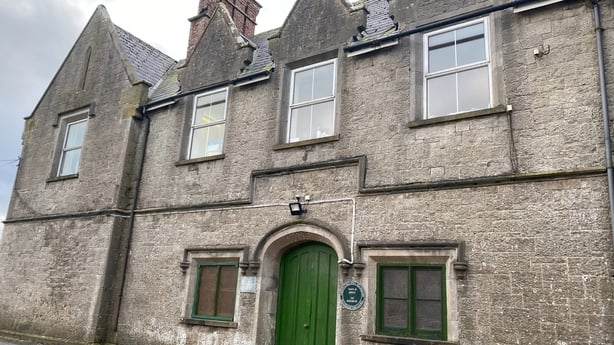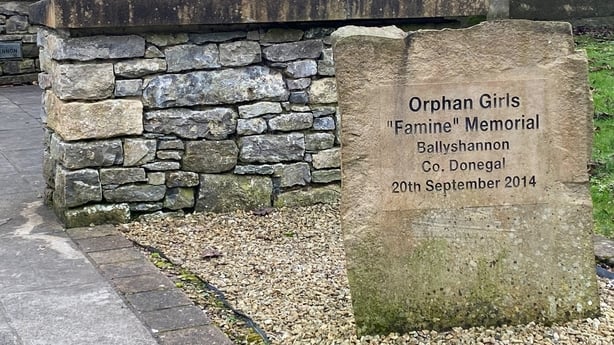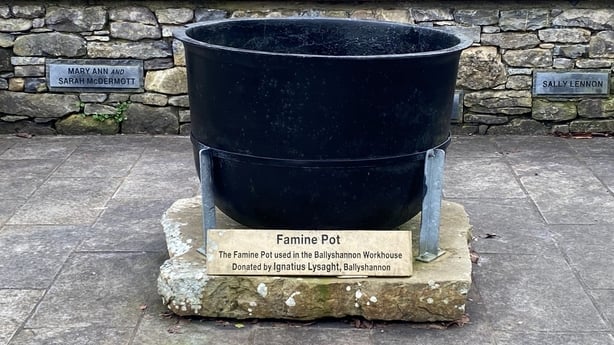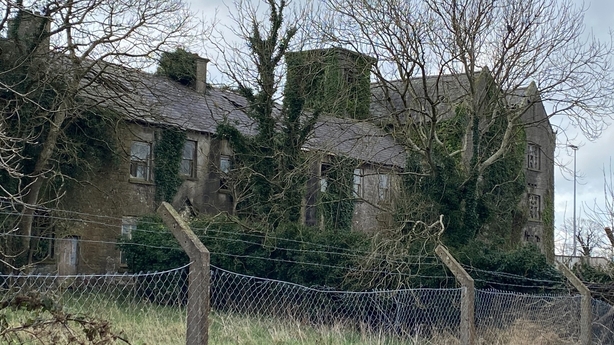It opened its doors in 1843 with accommodation for up to 600 people but at the height of the famine there were over 900 people living in Ballyshannon workhouse.
One of eight workhouses built in Co Donegal, Ballyshannon is the only one that remains largely intact.
However, serious concern has been raised about the structure, which is described in the National Inventory of Architectural Heritage as "an important element of the social history and built heritage of County Donegal".

Parts of the workhouse complex are in use by the HSE and Donegal County Council, but the main workhouse building has been derelict for years and is now in a precarious state.
Local Fine Gael Councillor, Barry Sweeny says urgent work is needed to preserve the building with the roof in particular needing attention.
Cllr Sweeny is involved in the Ballyshannon Regeneration Group, which wants to see the workhouse preserved and restored. It is a dark part of our history, he says, but it is an important building which could be put to many uses.
He said he would love to see something good become of a building which was once a place of horror.

Judith McCarthy, Curator at Donegal County Museum, which is itself housed in what was once the reception block of Letterkenny Workhouse, says that the workhouses were initially considered a last resort for people during the famine and later became a place of refuge at a time when there was no hospital system in Ireland.
As such, she said they played an important role as a sort of social care system right up to the foundation of the State.
Donegal County Museum has now created a virtual reality walk-through of Ballyshannon workhouse. Ms McCarthy said they wanted to give people an idea of what the workhouse looked like.
The VR, which can be accessed through the Donegal County Council website, describes the various rooms in the building and Ms McCarthy said it was done to raise awareness of the building which can no longer be accessed because of the derelict state it is in.

A new booklet on the Workhouses of Donegal has also been published and is available at the museum, local libraries and online. It tells the story of each of the county's workhouses, including Ballyshannon.
Historic buildings like Ballyshannon Workhouse are ripe for sensitive development that retains the historic structure of the building but enables communities to reuse them, according to Ms McCarthy, who said such derelict historic buildings could be preserved and put to many uses.
Barry Sweeny agrees, and says Ballyshannon Workhouse could be restored and utilised for many purposes. There are many tourism options, he said, pointing out that the building was a maternity hospital for many years and is where musician Rory Gallagher was born. There is currently a memorial there to 19 girls who were sent from the workhouse to Australia during the famine, another story which could be told in the building.

Cllr Sweeny would also like to see an educational aspect to the building, suggesting it could become a centre for the teaching of traditional building skills. He also suggests that cross-border funding could be an option, with Ballyshannon linking with a workhouse in Fermanagh for example, a county from which many inmates of Ballyshannon workhouse came.
Whatever its future holds, he believes the building is now at a critical juncture and that all stakeholders need to come together to protect, preserve and ultimately restore this important part of Ballyshannon's history before it is too late.






